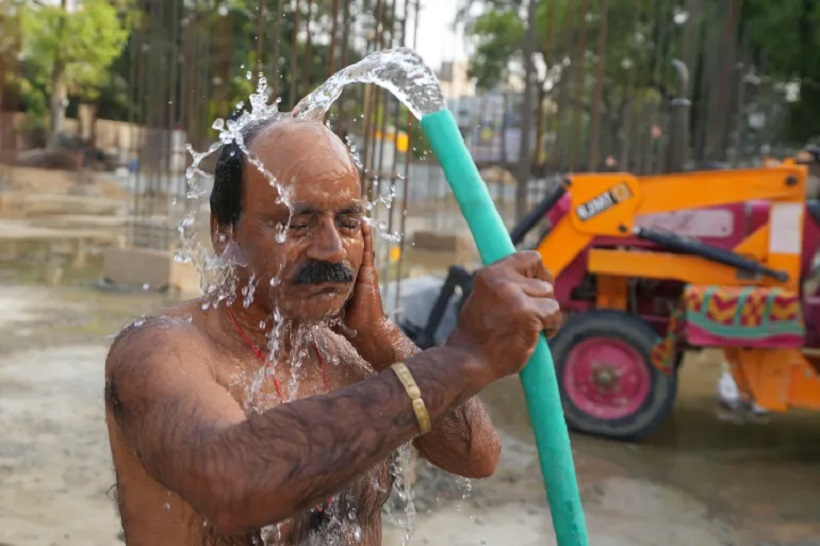
New Delhi- At least 34 people have died in the past two days as a large swath of the north Indian state of Uttar Pradesh swelters under severe heat, officials said on Saturday, prompting doctors to advise residents over 60 to stay indoors during the daytime.
The dead were all aged over 60 and had pre-existing health conditions that may have been exacerbated by the intense heat.
The fatalities occurred in Ballia district, some 300km (200 miles) southeast of Lucknow, the state capital.
Twenty-three deaths were reported on Thursday and another 11 died on Friday, Ballia’s Chief Medical Officer Jayant Kumar said.
“All the individuals were suffering from some ailments and their conditions worsened due to the extreme heat,” Kumar told The Associated Press news agency on Saturday.
He said most of the deaths were because of heart attacks, brain strokes and diarrhoea.
Diwakar Singh, another medical officer, said the people were admitted to Ballia’s main hospital in critical condition.
“Elderly people are vulnerable to extreme heat too,” he said.
India Meteorological Department data shows Ballia reported a maximum temperature of 42.2 degrees Celsius (108 degrees Fahrenheit) on Friday, which is 4.7C (8F) above normal.
The scorching summer has caused power outages across the state, leaving people with no running water, fans or air conditioners. Many have staged protests.
Uttar Pradesh Chief Minister Yogi Adityanath from the Bharatiya Janata Party (BJP) assured the public that the government was taking all necessary measures to ensure an uninterrupted power supply in the state. He urged citizens to cooperate with the government and use electricity judiciously.
“Every village and every city should receive adequate power supply during this scorching heat. If any faults occur, they should be promptly addressed,” he said on Friday night in a statement.
The main summer months – April, May and June – are generally hot in most parts of India before monsoon rains bring cooler temperatures. But temperatures have become more intense in the past decade.
During heatwaves, the country usually also suffers severe water shortages, with tens of millions of its 1.4 billion people lacking running water.
A study by World Weather Attribution, an academic group that examines the source of extreme heat, found that a searing heatwave in April that struck parts of South Asia was made at least 30 times more likely by climate change.
In April, the heat caused 13 people to die at a government event in India’s financial capital of Mumbai and prompted some states to close all schools for a week. (AP)
Follow this link to join our WhatsApp group: Join Now
Be Part of Quality Journalism |
Quality journalism takes a lot of time, money and hard work to produce and despite all the hardships we still do it. Our reporters and editors are working overtime in Kashmir and beyond to cover what you care about, break big stories, and expose injustices that can change lives. Today more people are reading Kashmir Observer than ever, but only a handful are paying while advertising revenues are falling fast. |
| ACT NOW |
| MONTHLY | Rs 100 | |
| YEARLY | Rs 1000 | |
| LIFETIME | Rs 10000 | |










